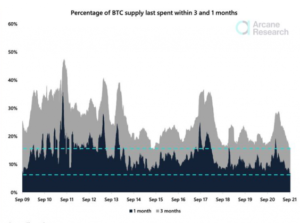Options trading can provide a meaningful addition to one’s portfolio when used in a disciplined manner. When used as a component of an overall portfolio approach, generating consistent monthly income while defining risk, leveraging a minimal amount of capital, and maximizing return on capital can be achieved. Options can enable smooth and consistent portfolio appreciation without guessing which way the market will move. An options-based portfolio can provide durability and resiliency to drive portfolio results with substantially less risk via a holistic beta-controlled manner. When engaging in options trading, specific rules must be followed, and one of the most important rules is to structure every option trade in a risk-defined (put spreads, call spreads, iron condors, etc.) manner.
PayPal (PYPL) was a recent example where the stock witnessed a massive meltdown from an ill-advised acquisition target (Pinterest) coupled with quarterly earnings that were deemed dismal. These two events culminated into a 35% slide from a 52-week high of $310 down to ~$200 post-earnings. Hence the importance of risk-defining all options trades to limit any downward stock movement beyond your protection strike. Risk-defined options trading prevents any losses beyond a specific strike price, avoids the assignment of shares, does not require a significant amount of capital, and does not potentially result in unrealized losses while soaking up capital with any share assignments.
Risk-Defined Options Trading
Risk-defined option trades are straightforward. Below is a theoretical example deploying a put spread on a stock that currently trades at $100 per share.
-
1. Sell a put at a $95 strike and collect $1 per share in premium – You take on the obligation to buy shares for $95 by the expiration date and receive $100 in option premium income.
2. Buy a put at a strike of $90 by using some of the premium received (e.g., $0.40 per share) – You have the right to sell shares at $90 a share by the expiration date.
In the above put spread scenario, premium income was $60 per contract ($1.00 – $0.40) and the maximum risk was $440 ($95 – $90 = $500 – $60 of net premium income). If the shares remain above $95 by the expiration date, then the option expires worthless, and the seller of the put spread locks in a realized gain of $60 or a return on investment of 13.6% ($60/$440). This is the essence of risk-defined options trading, where a minimal amount of capital is leveraged and return on investment is maximized.
No matter where the stock moves, losses are capped at $440 per contract even if the underlying stock falls to zero. This is the case due to the protection put leg that was purchased at the $90 strike. Therefore, in the worst-case scenario, if the stock were to fall to zero, you would be assigned shares at $95 and then sell the shares for $90 for a max loss of $5 per share less the $0.60 in premium, thus max loss of $440 per contract.
PayPal Case Study
PayPal (PYPL) experienced a dramatic fall from $296 on September 8th to ~$200 on November 10th after a two-step debacle of a mishandled acquisition target and a big earnings miss. This 32% downslide happened over the course of 8 weeks. A put spread of $245/$240 was sold on PayPal, and a near max loss was suffered. However, the $40 additional dollars per share in unrealized losses were avoided with the $240 protection strike. In a cash-covered put situation, shares would’ve been assigned at $245, and a subsequent ~20% loss would’ve been incurred. Cash-covered puts can not only be dangerous in situations like this but can also tie up substantial amounts of capital with unrealized losses. Therefore, a risk-defined put spread was essential in order to protect downside risk and avoid any capital-intensive assignment of shares.

Figure 1 – The importance of risk-defined options trades such as put spreads, call spreads, and iron condors which is the foundation of options trading – Storitev trgovanja in Orodje za preverjanje možnosti
10 pravil za agilno opcijsko strategijo
Discipliniran pristop k agilnemu portfelju, ki temelji na opcijah, je bistvenega pomena za krmarjenje po žariščih nestanovitnosti in izogibanje upadom trga. Če se možnosti uporabljajo za spodbujanje rezultatov portfelja, je treba uporabiti vrsto zaščitnih ukrepov. Pri prodaji opcij in upravljanju portfelja, ki temelji na opcijah, so bistvene naslednje smernice (slika 3):
-
1. Trgujte s široko paleto nekoreliranih tickerjev
2. Povečajte sektorsko raznolikost
3. Razporedite opcijske pogodbe na različne datume poteka
4. Prodajte opcije v okoljih visoke implicitne volatilnosti
5. Upravljajte zmagovalne posle
6. Uporabljajte posle z opredeljenim tveganjem
7. Ohranja približno 50-odstotno raven denarja
8. Povečajte število trgovanj, tako da se bodo verjetnosti ujemale s pričakovanimi rezultati
9. Postavite verjetnost uspeha v svojo korist (delta)
10. Ustrezna velikost pozicije/dodelitev trgovine
zaključek
An options-based portfolio can provide durability and resiliency to drive portfolio results with substantially less risk via a holistic beta-controlled manner. When engaging in options trading, specific rules must be followed, and one of the most important rules is to structure every option trade in a risk-defined (put spreads, call spreads, iron condors, etc.) manner. Therefore, a beta-controlled, options-based strategy is key, and the market meltdown in September reinforces why appropriate risk management is essential. An options-based approach provides a margin of safety while circumventing drastic market moves while containing portfolio volatility.
PayPal (PYPL) was a recent example where the stock witnessed a massive meltdown from an ill-advised acquisition target coupled with poor quarterly earnings. These two events culminated into a 35% slide from a 52-week high of $310 down to ~$200 post-earnings. Hence the importance of risk-defining all options trades to limit any downward stock movement beyond your protection strike. Risk-defined options trading prevents any losses beyond a specific strike price, avoids the assignment of shares, does not require a significant amount of capital, and does not potentially result in unrealized losses while tying up large sums of capital with share assignments.
Noah Kiedrowski
Sodelavec INO.com
Razkritje: Stock Options Dad LLC je registrirano podjetje za investicijsko svetovanje (RIA), specializirano za storitve in izobraževanje na podlagi opcij. Ni poslovnih odnosov z nobenim podjetjem, omenjenim v tem članku. Ta članek odraža mnenja RIA. Ta članek ni namenjen kot priporočilo za nakup ali prodajo katere koli omenjene delnice ali ETF. Avtor spodbuja vse vlagatelje, da pred vlaganjem ali kakršnim koli dejanjem pri trgovanju z opcijami opravijo lastno raziskavo in skrbni pregled. Prosimo, komentirajte in posredujte povratne informacije; avtor ceni vse odzive. Avtor je ustanovitelj in član uprave družbe Stock Options Dad LLC – registriranega podjetja za investicijsko svetovanje (RIA). www.stockoptionsdad.com opredelitev tveganja, izkoriščanje minimalne količine kapitala in maksimiranje donosnosti naložbe. Za bolj privlačno, kratkotrajno vsebino, ki temelji na opcijah, obiščite Stock Options Dad LLC's YouTube kanal. Prosimo, da vsa vprašanja naslovite na [e-pošta zaščitena]. Avtor ima delnice AAPL, AMZN, DIA, GOOGL, JPM, MSFT, QQQ, SPY in USO.
Source: https://www.ino.com/blog/2021/11/paypal-importance-of-risk-defined-option-trading/
- "
- pridobitev
- Dodatne
- vsi
- dodelitev
- članek
- poslovni
- nakup
- klic
- Kapital
- Denar
- Podjetja
- komponenta
- vsebina
- Naročilo
- pogodbe
- Delta
- skrbnosti
- dolarjev
- Plače
- Izobraževanje
- itd
- ETF
- dogodki
- Slika
- Firm
- Fundacija
- Ustanovitelj
- brezplačno
- Smernice
- visoka
- HTTPS
- prihodki
- vlaganjem
- naložbe
- Vlagatelji
- Ključne
- velika
- LLC
- Ključavnice
- upravljanje
- Tržna
- Meltdown
- premikanje
- premika
- Blizu
- net
- Obvestilo
- Komentarji
- Možnost
- možnosti
- Da
- PayPal
- Predvajaj
- slaba
- Portfelj
- Premium
- Cena
- zaščito
- zaščita
- Zaščitna
- Razmerja
- Raziskave
- Rezultati
- Tveganje
- upravljanje s tveganji
- pravila
- Varnost
- prodaja
- Storitve
- Delite s prijatelji, znanci, družino in partnerji :-)
- Delnice
- So
- prodaja
- namaz
- zaloge
- Strategija
- uspeh
- ciljna
- KRAVATA
- trgovini
- Trgovanja z dobičkom
- Trgovanje
- Volatilnost
- youtube
- nič



